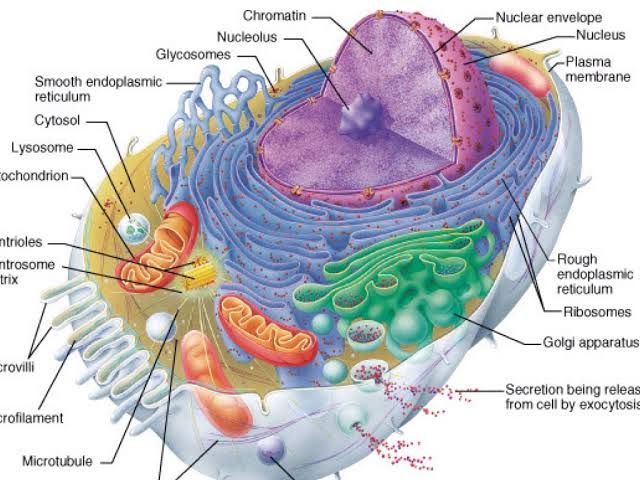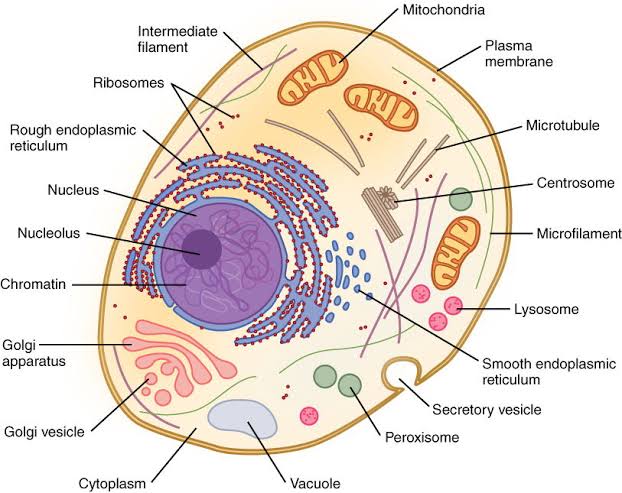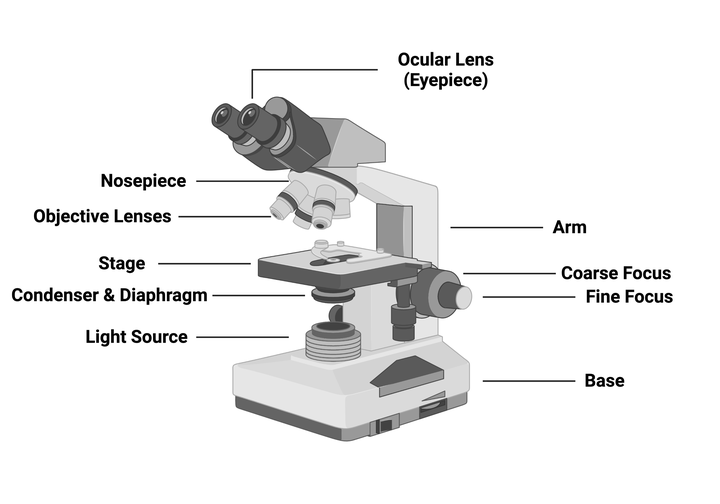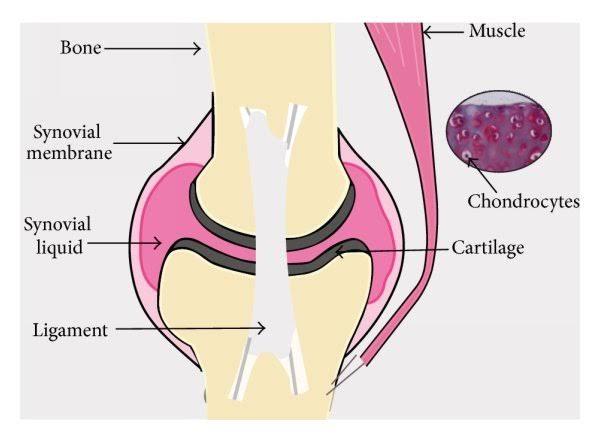
Definition of Organelles
Organelles are specialized structures within a cell that perform distinct processes necessary for the cell’s life and function. They can be thought of as the “organs” of the cell, each contributing to its overall operation and maintenance. Organelles are typically membrane-bound in eukaryotic cells, allowing them to compartmentalize various biochemical reactions.
Enumeration of Cell Organelles
The following is a list of key organelles found in eukaryotic cells:
- Mitochondria
- Ribosomes
- Endoplasmic Reticulum (ER)
- Rough ER
- Smooth ER
- Golgi Complex (Golgi Apparatus)
- Lysosomes
Structure, Composition, and Functions of Each Cell Organelle
1. Mitochondria
- Structure: Mitochondria are double-membrane-bound organelles with an outer membrane that is smooth and permeable to small molecules and ions, while the inner membrane is highly folded into structures called cristae, which increase surface area.
- Composition: Mitochondria contain their own DNA (mtDNA), ribosomes, and enzymes necessary for ATP production through oxidative phosphorylation.
- Functions: Mitochondria are known as the “powerhouses” of the cell because they generate adenosine triphosphate (ATP) through cellular respiration. They also play roles in regulating metabolism, apoptosis (programmed cell death), and calcium homeostasis.
2. Ribosomes
- Structure: Ribosomes are small, non-membrane-bound organelles composed of ribosomal RNA (rRNA) and proteins. They can exist freely in the cytoplasm or be bound to the endoplasmic reticulum.
- Composition: Ribosomes consist of two subunits: a large subunit and a small subunit. In eukaryotes, these subunits are referred to as 60S (large) and 40S (small).
- Functions: Ribosomes are responsible for protein synthesis by translating messenger RNA (mRNA) into polypeptide chains during the process known as translation.
3. Endoplasmic Reticulum (ER)
Structure: The endoplasmic reticulum is an extensive network of membranes that forms flattened sacs or tubules throughout the cytoplasm.
Composition: There are two types of ER:
- Rough ER: Studded with ribosomes on its cytoplasmic surface.
- Smooth ER: Lacks ribosomes and has a smooth appearance.
Functions:
- Rough ER: Synthesizes proteins destined for secretion or for use in lysosomes or plasma membranes.
- Smooth ER: Involved in lipid synthesis, detoxification processes, and calcium ion storage.
4. Golgi Complex (Golgi Apparatus)
- Structure: The Golgi complex consists of a series of flattened membranous sacs called cisternae stacked together.
- Composition: It contains enzymes that modify proteins received from the rough ER through glycosylation and other modifications.
- Functions: The Golgi apparatus is responsible for sorting, packaging, and distributing proteins and lipids synthesized in the endoplasmic reticulum. It plays a crucial role in post-translational modification before these molecules are sent to their final destinations.
5. Lysosomes
- Structure: Lysosomes are membrane-bound vesicles containing hydrolytic enzymes capable of breaking down various biomolecules.
- Composition: They contain over 50 different enzymes that can degrade proteins, lipids, carbohydrates, nucleic acids, and other cellular debris.
- Functions: Lysosomes act as the digestive system of the cell by breaking down waste materials and cellular debris through autophagy or phagocytosis. They help maintain cellular homeostasis by recycling components within cells.
Structure and Composition of Cytoplasm and Cytosol
1. Cytoplasm
- Structure: Cytoplasm refers to all cellular contents outside the nucleus but within the plasma membrane. It includes organelles suspended in a gel-like substance known as cytosol along with various inclusions such as granules or droplets.
- Composition: Cytoplasm is primarily composed of water (about 70-80%), salts, organic molecules like proteins, lipids, carbohydrates, nucleotides, ions such as potassium (K+), sodium (Na+), chloride (Cl−), magnesium (Mg2+), calcium (Ca2+), bicarbonate (HCO3−), phosphate ions (PO4^3−), amino acids, glucose, etc., which contribute to its viscosity and functionality.
2. Cytosol
Cytosol is the aqueous component of cytoplasm where organelles reside; it excludes organelles but includes dissolved ions, small molecules like sugars or amino acids, macromolecules like proteins or RNA complexes involved in metabolic pathways.
In summary:
- The cytoplasm encompasses everything between the plasma membrane and nucleus.
- The cytosol is specifically the fluid portion within this space where biochemical reactions occur.







